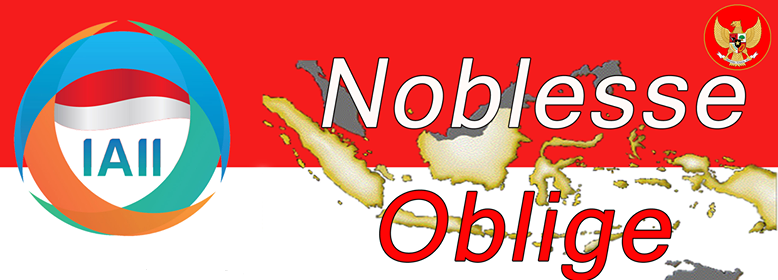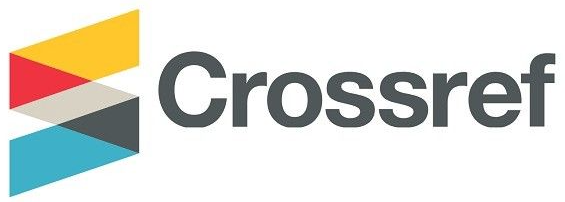Increased Accuracy on Image Classification of Game Rock Paper Scissors using CNN
Abstract
Rock Paper Scissors is one of the most popular games in the world, because of their easy and simple way to play among young and elderly people. The point of this game is to do the draw or just to find out who loses or wins. The pandemic conditions made people unable to meet face-to-face and could only play this game virtually. To carry out this activity in a virtual way, this research facilitates a model in the form of image classification to distinguish the hand gestures s in the form of rock, paper, and scissors. This classification process utilizes the Convolutional Neural Network (CNN) method. This method is one type of artificial neural network in terms of image classification. CNN uses three stages, namely convolutional layer, pooling layer, and fully connected layer. The implementation of this method for hand gesture classification in the form of rock, scissors, and paper images in this study shows an increased average accuracy towards the previous study from 97.66% to 99%.
Downloads
References
E. Nour Arrofiqoh dan Harintaka, “Implementasi Convolution Neural Network (CNN) Untuk Klasifikasi Jamur Konsumsi Di Indonesia Menggunakan Keras,” pdfs.semanticscholar.org, 2018, doi: 10.24895/JIG.2018.24-2.810.
M. F. Naufal et al., “Klasifikasi Citra Game Batu Kertas Gunting Menggunakan Convolutional Neural Network,” Techno.Com, vol. 20, no. 1, pp. 166–174, Feb. 2021, doi: 10.33633/TC.V20I1.4273.
L. Zhu and P. Spachos, “Towards Image Classification with Machine Learning Methodologies for Smartphones,” Mach. Learn. Knowl. Extr., vol. 1, no. 4, pp. 1039–1057, 2019, doi: 10.3390/make1040059.
T. Nurhikmat, “Implementasi deep learning untuk image classification menggunakan algoritma Convolutional Neural Network (CNN) pada citra wayang golek,” 2018, Accessed: Nov. 29, 2021. [Online]. Available: https://dspace.uii.ac.id/handle/123456789/7843.
S. Indolia, A. K. Goswami, S. P. Mishra, and P. Asopa, “Conceptual Understanding of Convolutional Neural Network- A Deep Learning Approach,” Procedia Comput. Sci., vol. 132, pp. 679–688, 2018, doi: 10.1016/j.procs.2018.05.069.
I. Cholissodin and A. A. Soebroto, “AI , MACHINE LEARNING & DEEP LEARNING ( Teori & Implementasi ),” no. July 2019, 2021.
N. Purnama, “Herbal Plant Detection Based on Leaves Image Using Convolutional Neural Network With Mobile Net Architecture,” vol. 6, no. 1, pp. 27–32, 2020, doi: 10.33480/jitk.v6i1.1400.
B. K. Triwijoyo, A. Adil, and A. Anggrawan, “Convolutional Neural Network With Batch Normalization for Classification of Emotional Expressions Based on Facial Images,” MATRIK J. Manajemen, Tek. Inform. dan Rekayasa Komput., vol. 21, no. 1, pp. 197–204, 2021, doi: 10.30812/matrik.v21i1.1526.
M. ABDULFATTAH, … L. N.-… : J. T. E., and undefined 2021, “Super Resolution pada Citra Udara menggunakan Convolutional Neural Network,” ejurnal.itenas.ac.id, vol. 9, no. 1, pp. 71–86, 2021, doi: 10.26760/elkomika.v9i1.71.
Buyut Khoirul Umri and V. Delica, “Penerapan transfer learning pada convolutional neural networks dalam deteksi covid-19.,” Jnanaloka, pp. 9–17, 2021, doi: 10.36802/jnanaloka.2021.v2-no2-9-17.
V. M. P. Salawazo, D. P. J. Gea, R. F. Gea, and F. Azmi, “Implementasi Metode Convolutional Neural Network ( CNN ) Pada Peneganalan Objek Video CCTV,” J. Mantik Penusa, vol. 3, no. 1, pp. 74–79, 2019.
R. M. Diar et al., “Klasifikasi Penyakit Paru-Paru Berbasis Pengolahan Citra X Ray Menggunakan Convolutional Neural Network ( Classification Of The Lung Diseases Based On X Ray Image Processing Using Convolutional Neural Network ),” vol. 9, no. 2, pp. 476–484, 2022.
F. N. Cahya, N. Hardi, D. Riana, and S. Hadiyanti, “Klasifikasi Penyakit Mata Menggunakan Convolutional Neural Network (CNN),” Sistemasi, vol. 10, no. 3, p. 618, 2021, doi: 10.32520/stmsi.v10i3.1248.
I. Wulandari, H. Yasin, and T. Widiharih, “Klasifikasi Citra Digital Bumbu Dan Rempah Dengan Algoritma Convolutional Neural Network (Cnn),” J. Gaussian, vol. 9, no. 3, pp. 273–282, 2020, doi: 10.14710/j.gauss.v9i3.27416.
A. J. Rozaqi, A. Sunyoto, and M. rudyanto Arief, “Deteksi Penyakit Pada Daun Kentang Menggunakan Pengolahan Citra dengan Metode Convolutional Neural Network,” Creat. Inf. Technol. J., vol. 8, no. 1, p. 22, 2021, doi: 10.24076/citec.2021v8i1.263.
I. M. Ihdal, “Klasifikasi Kain Khas Batik Dan Kain Khas Sasirangan Dengan Menggunakan Metode Convolutional Neural Network,” J. Teknol. Inf. Univ. Lambung Mangkurat, vol. 6, no. 1, pp. 25–30, 2021, doi: 10.20527/jtiulm.v6i1.62.
F. Naufal, “Comparative Analysis of Image Classification Algorithm for,” J. Teknol. Inf. dan Ilmu Komput., vol. 8, no. 2, pp. 311–318, 2021, doi: 10.25126/jtiik.202184553.
D. Alamsyah and D. Pratama, “Implementasi Convolutional Neural Networks (CNN) untuk Klasifikasi Ekspresi Citra Wajah pada FER-2013 Dataset,” J. Teknol. Inf., vol. 4, no. 2, pp. 350–355, 2020, doi: 10.36294/jurti.v4i2.1714.
A. Informatik, / Kognitive, S. Masterarbeit, and Z. Thema, “Applying Deep Learning for Classifying Images of Hand Postures in the Rock-Paper-Scissors Game,” no. 1839122, 2017.
Drgfreeman, “Rock-Paper-Scissors Images,” 2019. https://www.kaggle.com/datasets/drgfreeman/rockpaperscissors (accessed Jun. 16, 2022).
E. Rasywir, R. Sinaga, and Y. Pratama, “Analisis dan Implementasi Diagnosis Penyakit Sawit dengan Metode Convolutional Neural Network (CNN),” Paradig. - J. Komput. dan Inform., vol. 22, no. 2, pp. 117–123, 2020, doi: 10.31294/p.v22i2.8907.
S. Anatya, V. C. Mawardi, and J. Hendryli, “Fruit maturity classification using convolutional neural networks method,” IOP Conf. Ser. Mater. Sci. Eng., vol. 1007, no. 1, 2020, doi: 10.1088/1757-899X/1007/1/012149.
D. Irfansyah, M. Mustikasari, and A. Suroso, “Arsitektur Convolutional Neural Network (CNN) Alexnet Untuk Klasifikasi Hama Pada Citra Daun Tanaman Kopi,” J. Inform. J. Pengemb. IT, vol. 6, no. 2, pp. 87–92, 2021, [Online]. Available: http://ejournal.poltektegal.ac.id/index.php/informatika/article/view/2802.
Y. A. Putri, E. C. Djamal, and R. Ilyas, “Identification of Medicinal Plant Leaves Using Convolutional Neural Network,” J. Phys. Conf. Ser., vol. 1845, no. 1, 2021, doi: 10.1088/1742-6596/1845/1/012026.
H. Fonda, Y. Irawan, A. Febriani, S. Informatika, and H. T. Pekanbaru, “Klasifikasi Batik Riau Dengan Menggunakan Convolutional Neural Networks (Cnn): Klasifikasi Batik Riau Dengan Menggunakan Convolutional Neural Networks,” jik.htp.ac.id, vol. 9, no. 1, pp. 7–10, 2020, Accessed: Nov. 29, 2021. [Online]. Available: https://jik.htp.ac.id/index.php/jik/article/view/144.
N. Ramadhani, J. Hendryli, ) Dyah, and E. Herwindianti, “Pencarian Objek Wisata Bersejarah Di Pulau Jawa Menggunakan Convolutional Neural Network,” journal.untar.ac.id, Accessed: Nov. 29, 2021. [Online]. Available: http://journal.untar.ac.id/index.php/jiksi/article/view/5924.
A. Rahim, K. Kusrini, and E. T. Luthfi, “Convolutional Neural Network untuk Kalasifikasi Penggunaan Masker,” Inspir. J. Teknol. Inf. dan Komun., vol. 10, no. 2, p. 109, 2020, doi: 10.35585/inspir.v10i2.2569.
M. Harahap, Em Manuel Laia, Lilis Suryani Sitanggang, Melda Sinaga, Daniel Franci Sihombing, and Amir Mahmud Husein, “Deteksi Penyakit Covid-19 Pada Citra X-Ray Dengan Pendekatan Convolutional Neural Network (CNN),” J. RESTI (Rekayasa Sist. dan Teknol. Informasi), vol. 6, no. 1, pp. 70–77, 2022, doi: 10.29207/resti.v6i1.3373.
I. Weni, P. E. P. Utomo, B. F. Hutabarat, and M. Alfalah, “Detection of Cataract Based on Image Features Using Convolutional Neural Networks,” IJCCS (Indonesian J. Comput. Cybern. Syst., vol. 15, no. 1, p. 75, 2021, doi: 10.22146/ijccs.61882.
R. M.- JNANALOKA and undefined 2020, “Klasifikasi motif batik menggunakan Convolutional Neural Network,” lenteradua.net, doi: 10.36802/jnanaloka.
A. Jakaria, S. Mu, D. Riana, and S. Hadianti, “Klasifikasi Varietas Buah Kiwi dengan Metode Convolutional Neural Networks Menggunakan Keras,” vol. 5, pp. 1309–1315, 2021, doi: 10.30865/mib.v5i4.3166.
Copyright (c) 2022 Jurnal RESTI (Rekayasa Sistem dan Teknologi Informasi)

This work is licensed under a Creative Commons Attribution 4.0 International License.
Copyright in each article belongs to the author
- The author acknowledges that the RESTI Journal (System Engineering and Information Technology) is the first publisher to publish with a license Creative Commons Attribution 4.0 International License.
- Authors can enter writing separately, arrange the non-exclusive distribution of manuscripts that have been published in this journal into other versions (eg sent to the author's institutional repository, publication in a book, etc.), by acknowledging that the manuscript has been published for the first time in the RESTI (Rekayasa Sistem dan Teknologi Informasi) journal ;







